-
 Bitcoin
Bitcoin $101,898.5005
-0.75% -
 Ethereum
Ethereum $2,258.1125
-1.07% -
 Tether USDt
Tether USDt $1.0004
0.01% -
 XRP
XRP $2.0178
-2.93% -
 BNB
BNB $624.0243
-1.53% -
 Solana
Solana $134.3298
-0.90% -
 USDC
USDC $0.9999
0.01% -
 TRON
TRON $0.2675
-2.05% -
 Dogecoin
Dogecoin $0.1538
-1.96% -
 Cardano
Cardano $0.5482
-1.11% -
 Hyperliquid
Hyperliquid $35.5636
5.45% -
 Bitcoin Cash
Bitcoin Cash $453.4902
-1.66% -
 Sui
Sui $2.5134
-2.97% -
 UNUS SED LEO
UNUS SED LEO $9.1292
1.77% -
 Chainlink
Chainlink $11.8457
-1.60% -
 Stellar
Stellar $0.2312
-2.73% -
 Avalanche
Avalanche $16.9721
0.29% -
 Toncoin
Toncoin $2.7549
-3.82% -
 Shiba Inu
Shiba Inu $0.0...01081
-1.10% -
 Litecoin
Litecoin $80.8250
-0.71% -
 Hedera
Hedera $0.1374
0.21% -
 Monero
Monero $305.4827
-2.36% -
 Ethena USDe
Ethena USDe $1.0006
0.00% -
 Dai
Dai $1.0000
-0.01% -
 Polkadot
Polkadot $3.2085
-3.12% -
 Bitget Token
Bitget Token $4.0845
-3.13% -
 Uniswap
Uniswap $6.3353
-1.63% -
 Pi
Pi $0.5085
-0.70% -
 Pepe
Pepe $0.0...08913
-3.82% -
 Aave
Aave $232.7090
-0.58%
Does AVL indicator need to be matched with moving average? What moving average period is most suitable for AVL indicator?
The AVL indicator, when paired with moving averages like a 10-period EMA or 200-period SMA, can enhance trading decisions by confirming volume trends in the crypto market.
May 23, 2025 at 11:42 pm
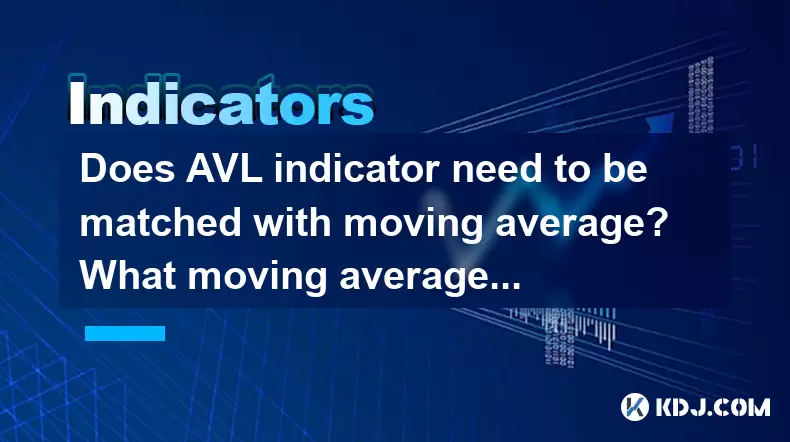
The Average Volume Line (AVL) indicator is a powerful tool used by traders in the cryptocurrency market to assess the volume trends and potential market strength of a specific asset. This article delves into whether the AVL indicator needs to be matched with moving averages, and if so, what moving average period would be most suitable for enhancing its effectiveness.
Understanding the AVL Indicator
The AVL indicator calculates the average volume over a specified period, providing traders with insights into the trading activity levels of a cryptocurrency. By tracking these volume trends, traders can identify periods of high interest or potential reversals in the market. The AVL is typically plotted as a line on the chart, and its movement can signal whether a cryptocurrency is experiencing increased or decreased trading activity.
The Role of Moving Averages in Trading
Moving averages are another essential tool in a trader's arsenal. They smooth out price data to create a single flowing line, making it easier to identify the direction of the trend. There are various types of moving averages, such as the Simple Moving Average (SMA) and the Exponential Moving Average (EMA), each with different calculation methods and sensitivities to price changes.
Necessity of Matching AVL Indicator with Moving Averages
While the AVL indicator can be used independently to gauge volume trends, combining it with moving averages can enhance its utility. Moving averages can help traders confirm the signals provided by the AVL indicator. For instance, if the AVL indicator shows an increase in volume, and this coincides with a price moving above a key moving average, it could signal a strong bullish trend.
Choosing the Right Moving Average Period for AVL Indicator
Selecting the most suitable moving average period for use with the AVL indicator depends on the trading strategy and time frame of the trader. Here are some commonly used moving average periods and their implications when used in conjunction with the AVL indicator:
Short-term moving averages (5-20 periods): These are more sensitive to price changes and can be useful for short-term traders looking to capitalize on quick volume spikes indicated by the AVL. For example, a 10-period SMA or EMA can help identify short-term trends that align with sudden increases in volume.
Medium-term moving averages (20-50 periods): These provide a balance between sensitivity and lag, making them suitable for traders who want to confirm volume trends over a medium time frame. A 20-period or 50-period moving average can help validate whether the volume increase shown by the AVL is part of a more sustained trend.
Long-term moving averages (50-200 periods): These are less sensitive to short-term fluctuations and are ideal for long-term traders. A 200-period moving average, for instance, can help confirm whether the volume trends indicated by the AVL are part of a long-term market movement.
Practical Application of AVL and Moving Averages
To effectively use the AVL indicator with moving averages, traders can follow these steps:
- Select a cryptocurrency: Choose the cryptocurrency you wish to analyze.
- Apply the AVL indicator: Add the AVL indicator to your chart with the desired period, typically ranging from 10 to 50 periods depending on your trading style.
- Add a moving average: Select the type of moving average (SMA or EMA) and the period that aligns with your trading strategy. For example, a short-term trader might use a 10-period EMA.
- Analyze the signals: Look for instances where the AVL indicator shows an increase in volume and the price crosses above the moving average. This could indicate a strong buying opportunity.
- Confirm the trend: Ensure that the volume increase aligns with the direction of the moving average to validate the trend.
Example of Using AVL with Moving Averages
Consider a scenario where a trader is analyzing Bitcoin (BTC). They apply a 20-period AVL indicator and a 50-period SMA to the chart. If the AVL indicator begins to rise, indicating increased volume, and the price of BTC crosses above the 50-period SMA, this could be a signal to enter a long position. The rising volume, confirmed by the moving average crossover, suggests a strong bullish trend.
Customizing the AVL and Moving Average Setup
Traders can customize their use of the AVL indicator and moving averages to suit their specific needs. Some might prefer using multiple moving averages of different periods to get a clearer picture of the trend. For instance, using a short-term 10-period EMA alongside a long-term 200-period SMA can provide insights into both short-term and long-term trends, which can be cross-referenced with the AVL indicator.
Conclusion on AVL and Moving Averages
In summary, while the AVL indicator can be used independently, pairing it with moving averages can significantly enhance its effectiveness. The choice of moving average period should align with the trader's time frame and strategy, with short-term, medium-term, and long-term options available. By carefully analyzing the signals provided by both the AVL indicator and moving averages, traders can make more informed decisions in the cryptocurrency market.
Frequently Asked Questions
Q1: Can the AVL indicator be used effectively without moving averages?
Yes, the AVL indicator can be used independently to assess volume trends. However, combining it with moving averages can provide additional confirmation of the trend, making it a more robust trading strategy.
Q2: What are the key differences between SMA and EMA when used with the AVL indicator?
The Simple Moving Average (SMA) gives equal weight to all prices within the period, while the Exponential Moving Average (EMA) gives more weight to recent prices. When used with the AVL indicator, an EMA might be more responsive to recent volume changes, making it suitable for traders who want to react quickly to market movements.
Q3: How can traders avoid false signals when using the AVL indicator and moving averages?
Traders can avoid false signals by waiting for confirmation from multiple indicators. For example, they might look for the AVL indicator to show a significant volume increase, the price to cross above a moving average, and additional confirmation from other technical indicators like the Relative Strength Index (RSI) or Moving Average Convergence Divergence (MACD).
Q4: Is it possible to use the AVL indicator with other types of technical analysis tools?
Yes, the AVL indicator can be used in conjunction with a variety of other technical analysis tools. For instance, combining it with trend lines, support and resistance levels, and momentum indicators can provide a comprehensive view of market conditions and help traders make more informed decisions.
Disclaimer:info@kdj.com
The information provided is not trading advice. kdj.com does not assume any responsibility for any investments made based on the information provided in this article. Cryptocurrencies are highly volatile and it is highly recommended that you invest with caution after thorough research!
If you believe that the content used on this website infringes your copyright, please contact us immediately (info@kdj.com) and we will delete it promptly.
- Bitcoin Price Wobbles: Crash Watch and Key Support Levels
- 2025-06-23 16:25:12
- Navigating the Crypto Seas: Charting a Course Through Bull Runs and Bear Markets
- 2025-06-23 16:25:12
- BNB Price Check: Stablecoin Surge vs. Prediction Rollercoaster
- 2025-06-23 14:25:12
- Metaplanet's Bitcoin Bonanza: Holdings Skyrocket Amidst Market Swings
- 2025-06-23 14:25:12
- Global Meltdown, Investors, and Safe Havens: Navigating the Storm
- 2025-06-23 14:30:12
- NFT Sales Snapshot: Guild of Heroes, Polygon, and the Market's Shifting Sands
- 2025-06-23 15:25:12
Related knowledge

How much volume is required for the W-bottom to break through the neckline of the time-sharing chart?
Jun 23,2025 at 04:21pm
Understanding the W-Bottom Pattern in Cryptocurrency TradingThe W-bottom pattern is a popular technical analysis formation used by traders to identify potential bullish reversals. It typically appears at the end of a downtrend and resembles the letter 'W' on price charts. In the context of cryptocurrency trading, where volatility is high and trends shif...

How to read the sideways consolidation after the bottom volume and long positive line?
Jun 23,2025 at 02:28pm
Understanding the Sideways ConsolidationWhen analyzing cryptocurrency charts, sidewards consolidation refers to a phase where prices move within a narrow range without a clear upward or downward trend. This pattern often appears after significant price movements, such as a sharp increase followed by a period of equilibrium between buyers and sellers. In...
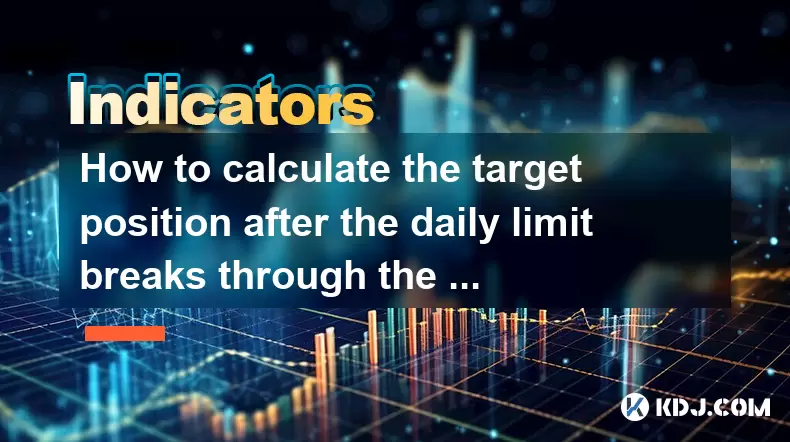
How to calculate the target position after the daily limit breaks through the previous high?
Jun 23,2025 at 02:57pm
Understanding the Daily Limit BreakthroughIn cryptocurrency trading, a daily limit typically refers to the maximum price movement allowed within a single trading day on certain exchanges. When this limit is breached, especially when it surpasses the previous high, traders often seek to calculate the target position or expected price movement following s...
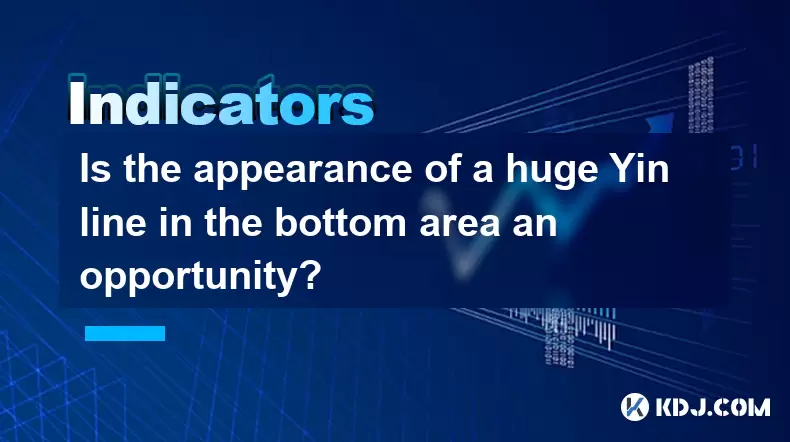
Is the appearance of a huge Yin line in the bottom area an opportunity?
Jun 23,2025 at 04:07pm
Understanding the Meaning of a Huge Yin LineIn technical analysis within the cryptocurrency market, a huge Yin line is often interpreted as a strong bearish signal. It indicates that sellers have dominated the market over a specific period, pushing prices significantly downward. When this occurs in what appears to be a bottom area, traders might questio...
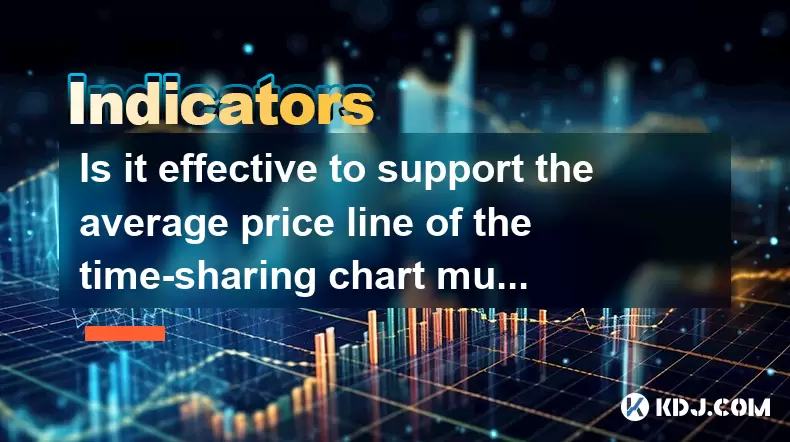
Is it effective to support the average price line of the time-sharing chart multiple times?
Jun 23,2025 at 01:36pm
Understanding the Average Price Line in Time-Sharing ChartsIn cryptocurrency trading, time-sharing charts refer to real-time price charts that display price movements over short intervals, often within a single trading day. Within these charts, the average price line, also known as the Volume Weighted Average Price (VWAP), is a commonly used technical i...
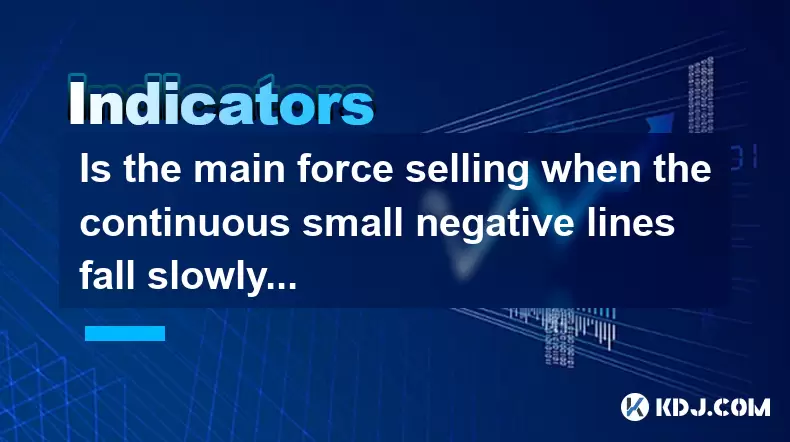
Is the main force selling when the continuous small negative lines fall slowly?
Jun 23,2025 at 03:35pm
Understanding Continuous Small Negative Lines in Cryptocurrency ChartsIn cryptocurrency trading, continuous small negative lines refer to a pattern where the price of an asset declines gradually over time with small bearish candlesticks. These candlesticks typically have short bodies and may or may not have wicks. This pattern often appears during perio...

How much volume is required for the W-bottom to break through the neckline of the time-sharing chart?
Jun 23,2025 at 04:21pm
Understanding the W-Bottom Pattern in Cryptocurrency TradingThe W-bottom pattern is a popular technical analysis formation used by traders to identify potential bullish reversals. It typically appears at the end of a downtrend and resembles the letter 'W' on price charts. In the context of cryptocurrency trading, where volatility is high and trends shif...

How to read the sideways consolidation after the bottom volume and long positive line?
Jun 23,2025 at 02:28pm
Understanding the Sideways ConsolidationWhen analyzing cryptocurrency charts, sidewards consolidation refers to a phase where prices move within a narrow range without a clear upward or downward trend. This pattern often appears after significant price movements, such as a sharp increase followed by a period of equilibrium between buyers and sellers. In...

How to calculate the target position after the daily limit breaks through the previous high?
Jun 23,2025 at 02:57pm
Understanding the Daily Limit BreakthroughIn cryptocurrency trading, a daily limit typically refers to the maximum price movement allowed within a single trading day on certain exchanges. When this limit is breached, especially when it surpasses the previous high, traders often seek to calculate the target position or expected price movement following s...

Is the appearance of a huge Yin line in the bottom area an opportunity?
Jun 23,2025 at 04:07pm
Understanding the Meaning of a Huge Yin LineIn technical analysis within the cryptocurrency market, a huge Yin line is often interpreted as a strong bearish signal. It indicates that sellers have dominated the market over a specific period, pushing prices significantly downward. When this occurs in what appears to be a bottom area, traders might questio...

Is it effective to support the average price line of the time-sharing chart multiple times?
Jun 23,2025 at 01:36pm
Understanding the Average Price Line in Time-Sharing ChartsIn cryptocurrency trading, time-sharing charts refer to real-time price charts that display price movements over short intervals, often within a single trading day. Within these charts, the average price line, also known as the Volume Weighted Average Price (VWAP), is a commonly used technical i...

Is the main force selling when the continuous small negative lines fall slowly?
Jun 23,2025 at 03:35pm
Understanding Continuous Small Negative Lines in Cryptocurrency ChartsIn cryptocurrency trading, continuous small negative lines refer to a pattern where the price of an asset declines gradually over time with small bearish candlesticks. These candlesticks typically have short bodies and may or may not have wicks. This pattern often appears during perio...
See all articles
























































































